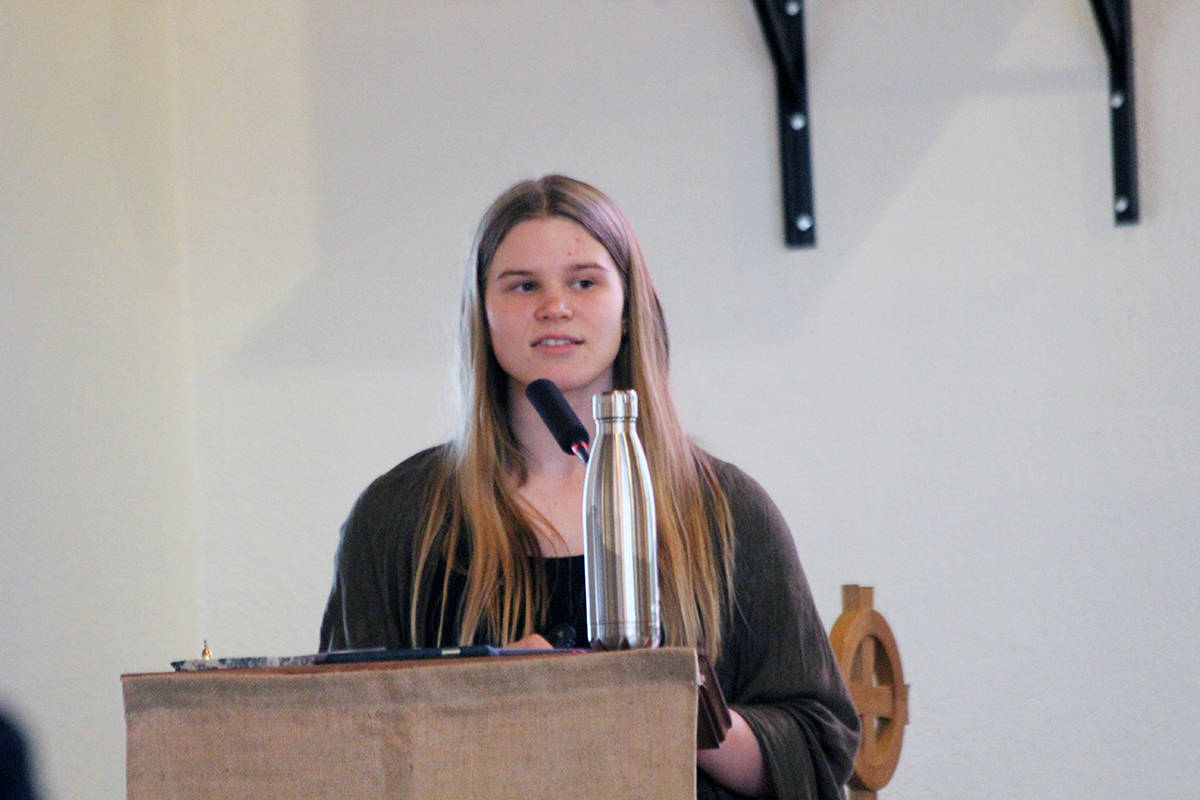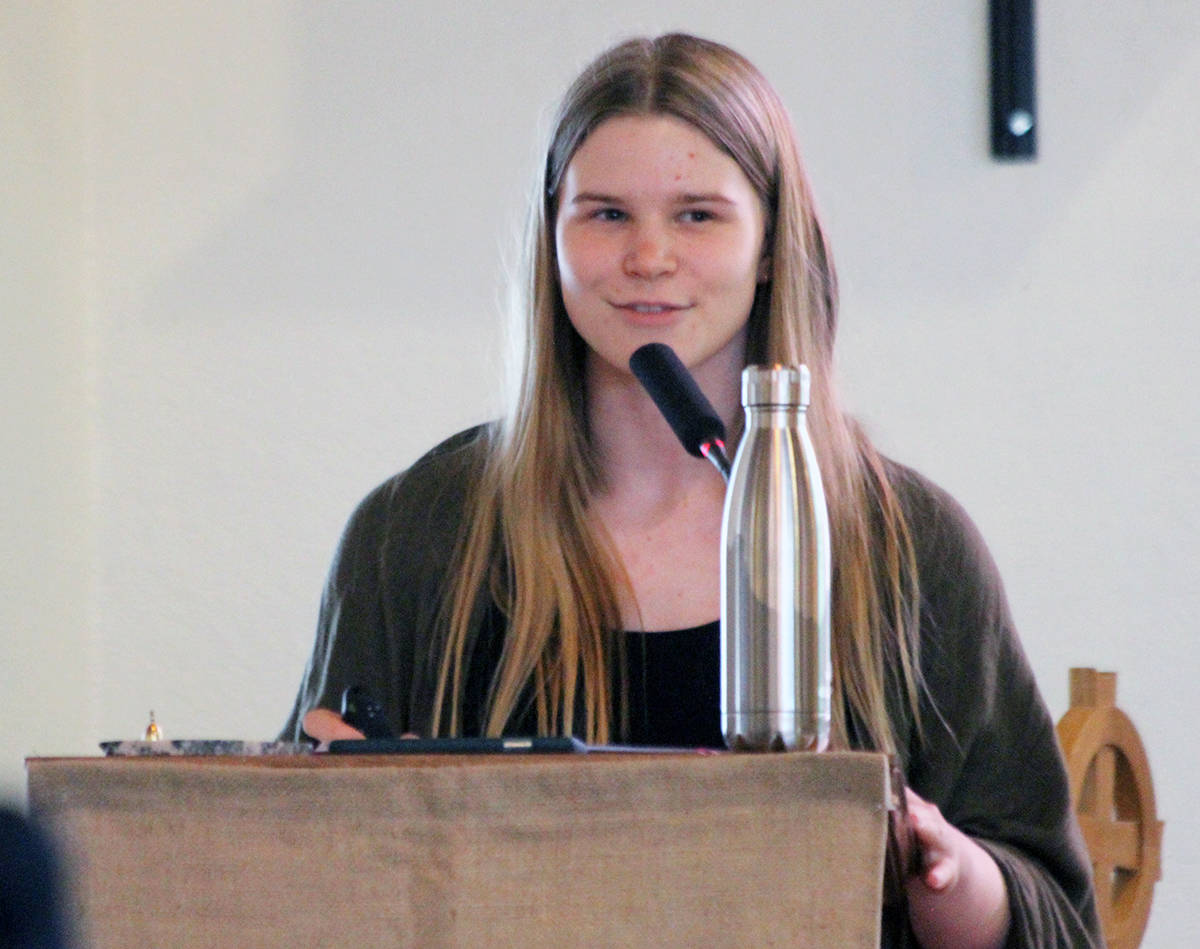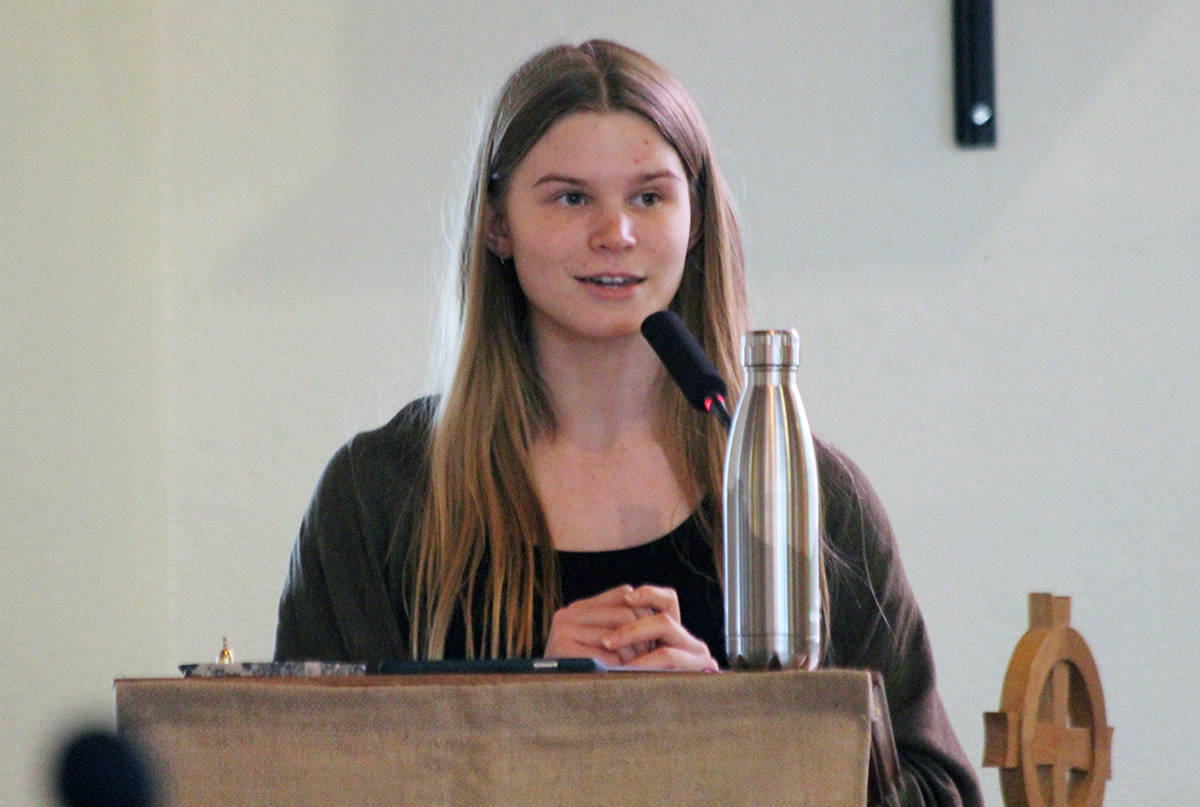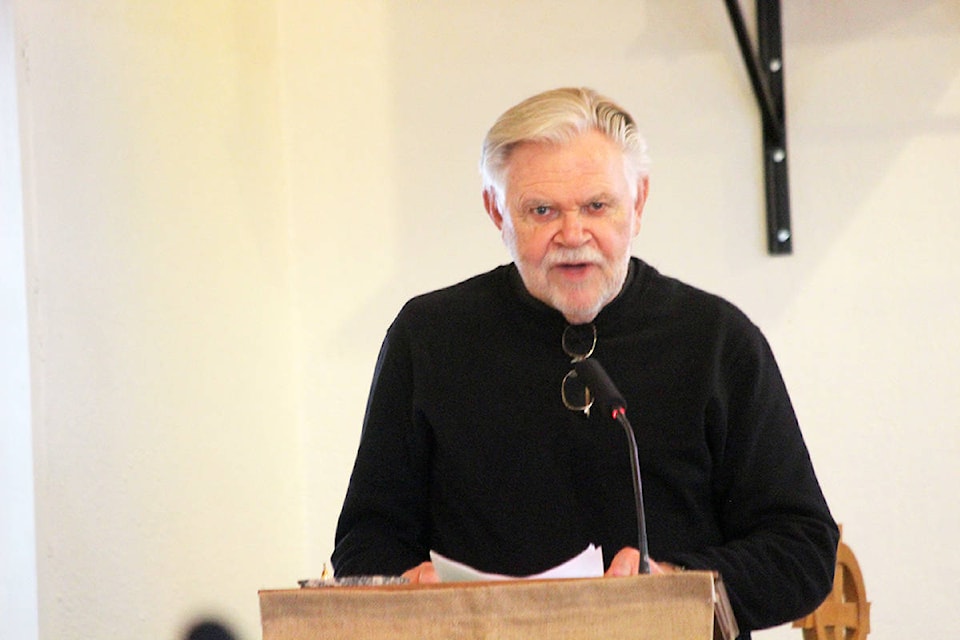The final session in the series of public seminars and panel discussions scheduled for March 14 has been postponed until a later date due to the ongoing situation with the COVID-19 pandemic.
John Silins of Chemainus Climate Solutions that sponsored and co-hosted the series with the Chemainus United Church regretted having to make that decision.
“The things that bother me most about COVID-19 is that it appears to be infectious some days before symptoms appear,” he noted. “That makes contact tracing extremely difficult, if not impossible. While the incidence rate now appears to be much lower than that for influenza, mortality is estimated to be five to 10 times greater than that for influenza. As things stand now the risk of exposure to the virus is low, however, it is a risk that needs not to be taken.”
Individuals with expertise in many different areas were set to answer questions and make comments about the climate change crisis. Attempts will be made to assemble them all again another time.
The March 7 session at the Chemainus United Church featured two presentations. John Scull, a conservation psychologist, spoke about Project Drawdown and Thetis Island’s Katia Bannister, a Grade 11 student at Queen Margaret’s School in Duncan, provided a Youth in the Climate Crisis perspective.
Paul Hawken’s book Drawdown is billed as the most comprehensive plan ever proposed to reverse global warming. Hawken is an American environmentalist, entrepreneur, author and activist.
There is now a revised version of Drawdown that’s available on-line, Scull noted in his presentation.
Drawdown solutions are listed by overall rank from 1-80, with 20 more components under the Coming Attractions section.
“There is no small solution,” stressed Scull. “We need all of it.”
The top 10 items on the list are: 1. Refrigerant Management; 2. Wind Turbines (on-shore); 3. Reduced Food Waste; 4. Plant-Rich Diet; 5. Tropical Forests; 6. Educating Girls; 7. Family Planning; 8. Solar Farms; 9. Silvopasture; and 10. Rooftop Solar.
Everyone can identify with some of those categories, but others will require more research and understanding.
“Everybody can probably resonate with food waste,” Scull indicated.
Educating girls/family planning taken together marks a huge step going forward to “delay the birth of the first child and that slows population growth right down,” he added.
The modeling is designed to attain a significant change by 2050.
“What we do know given the science are the odds are long,” said Scull.
“To me, it’s a question if it’s ‘game on’ or ‘game over.’ We do know what to do, we are doing it. For me and I think everybody who’s touched by it, there’s a sense the odds are irrelevant.”
It’s all about collaboration for Scull.
“That’s how we create a change - not by dividing. Even those who deny the science, we shouldn’t demonize or criticize them. It’s really important if we’re going to make this change that we listen.”
Bannister presented the climate crisis from a youth perspective and how Generation Z is facing ridicule from adults for taking their stances, particularly on social media. It’s a quandary for youth to avoid generational dynamics that are in-conducive to working collaboratively.
“Youth are holding themselves accountable not only for their actions, but generations before them,” said Bannister. “We are dedicated to our cause.”
She is also a member of the Cowichan Valley Earth Guardians who have made their presence felt at rallies.
The negativity towards them has been distressing at times, but they remain committed.
“I really shouldn’t have to defend the actions of my friends and I,” said Bannister.
“When is it ever OK for any adult to tell any young person they are a waste of air?”
The mental health impacts of climate change are an invisible threat to young people. Bannister presented comments from several area youth, including herself to illustrate that point.
“Climate change impacts my career path and day-to-day decision,” noted Fiona Grant, 18. “It has also increased my anxiety, pushed me to tears, made me fear for the future of everyone and everything, and has made me feel utterly hopeless at times.”
“Some days I am nothing more than tears and despair, trying to find some stability to cling to in the face of ecological collapse,” added Bannister, 16. “I can feel like no one is grieving; the climate crisis being not often more than small talk. I am equally hopeful about and terrified of what is to come. And the only guarantee I have in the midst of the crisis is that I am trying the best I can to create the change we need.”
“When I think of climate change I get really scared to think that so many ecosystems are hurting because of it breaks my heart,” Lily Parker, 15, indicated.
Bannister pointed out there are many ways adults can help youth and join them in the cause that affects everyone.
“Youth do not need to be told what to do,” she remarked. “But we do ask for a gentle hand at our back.”
Bannister drew loud applause at stages of her presentation and Silins was among those left incredibly moved.
“Wow!,” he said. “With that kind of commitment, dedication and leadership, I don’t think we can go wrong.”



